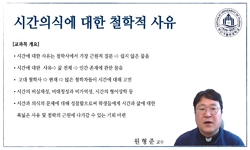The widening performance gap between processor and memory causes an emergence of the promising architecture, processor-memory (P-M) integration. In this paper, various design issues for P-M integration are studied. First, an analytical model of the DR...
http://chineseinput.net/에서 pinyin(병음)방식으로 중국어를 변환할 수 있습니다.
변환된 중국어를 복사하여 사용하시면 됩니다.
- 中文 을 입력하시려면 zhongwen을 입력하시고 space를누르시면됩니다.
- 北京 을 입력하시려면 beijing을 입력하시고 space를 누르시면 됩니다.
고성능 프로세서-메모리 혼합 구조의 설계 및 성능 분석 = Design and Perforrnance Analysis of High Perfo Processor-Memory Integrated Architectures
한글로보기https://www.riss.kr/link?id=A101868320
- 저자
- 발행기관
- 학술지명
- 권호사항
-
발행연도
1998
-
작성언어
-
- 주제어
-
KDC
500
-
자료형태
학술저널
-
수록면
2686-2703(18쪽)
- 제공처
-
0
상세조회 -
0
다운로드
부가정보
다국어 초록 (Multilingual Abstract)
The widening performance gap between processor and memory causes an emergence of the promising architecture, processor-memory (P-M) integration. In this paper, various design issues for P-M integration are studied. First, an analytical model of the DRAM access time is constructed considering both the bank conflict ratio and the DRAM page hit ratio. Then the points of both the performance improvement and the performance bottle neck are found by the proposed model as designing on-chip DRAM architectures. This paper proposes the new architecture, called the delayed precharge bank architecture, to improve the performance of memory system as increasing the DRAM page hit ratio. This paper also adapts an efficient bank interleaving mechanism to the proposed architecture. This architecture is verified to be better that the hierarchical multi-bank architecture as well as the conventional bank architecture by execution driven simulation. Eight SPEC95 benchmarks are used for simulation as changing parameters for the cache architecture, the number of DRAM banks, and the delayed time quantum.
동일학술지(권/호) 다른 논문
-
Victim BTB 를 활용한 히트율 개선과 효율적인 통합 분기 예측
- 한국정보처리학회
- 주영상(Joo Young Sang)
- 1998
-
- 한국정보처리학회
- 김현순(Kim Hyun Soon)
- 1998
-
유전자 알고리즘을 이용한 MRF 기반의 Texture분할
- 한국정보처리학회
- 이경미(Lee Kyung Mi)
- 1998
-
WRLS-VFF-VT 알고리듬을 이용한 새로운 피치 검출 방법
- 한국정보처리학회
- 이교식(Lee Kyo Sik)
- 1998




 ScienceON
ScienceON KISS
KISS






